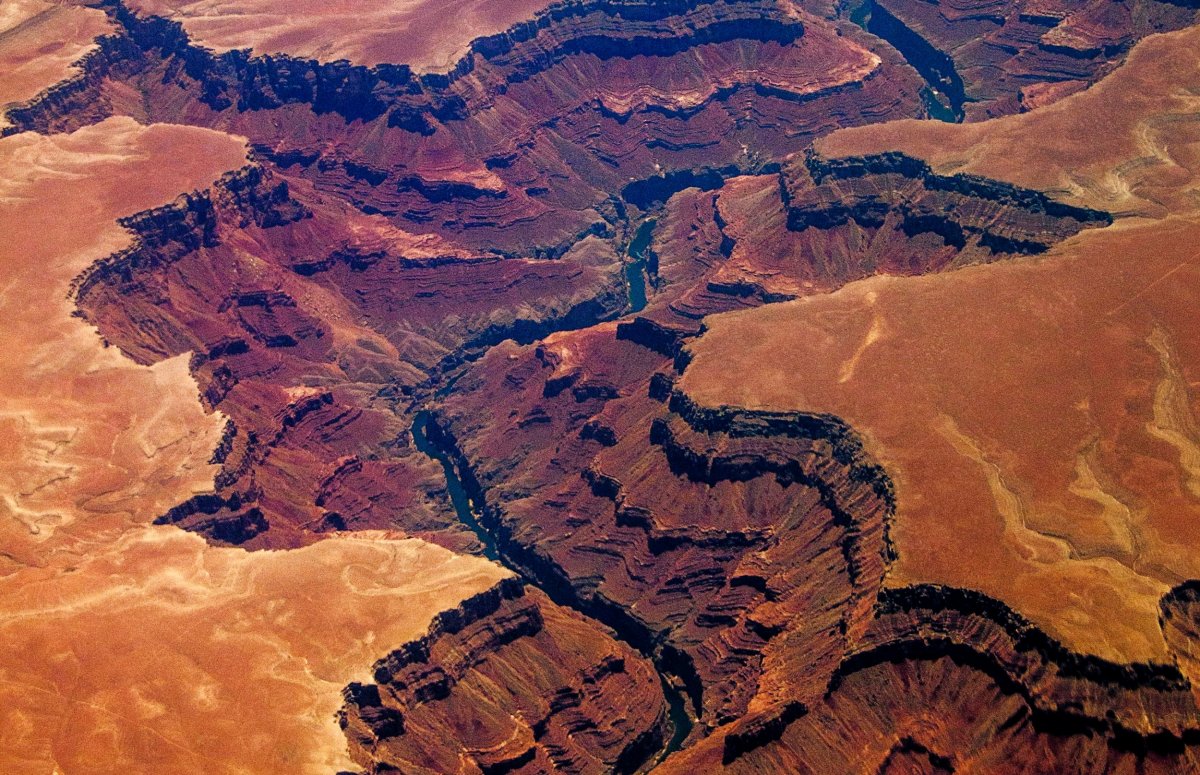Employees and visitors to the Grand Canyon could have been exposed to unsafe levels of radiation over the past two decades, the park's safety director has claimed.
Elston "Swede" Stephenson, the safety, health and wellness manager at the National Park, told The Arizona Republic that three five-gallon paint buckets of uranium ore were stored near a taxidermy exhibit at the Museum Collections Building. One would not close because it was full, he said.
Stephenson calculated that adults close to the containers could have been exposed to radiation 400 times above the safe limit, and 4,000 for children. Tours in the building could pause beside the taxidermy exhibit for at least 30 minutes, he said. The amounts of radiation in the vessels could have tipped adults over the unsafe limit after half a minute, and three seconds in children, according to Stephenson's calculations.
In an email to Park Service employees sent on February 4, Stephenson warned those who had been in the building between 2000 and June 18 2018 could have been "exposed" to uranium according to the definition given by the Occupational Safety and Health Administration (OSHA) and the safe limits set by the Nuclear Regulatory Commission.
The former Navy safety manager blew the whistle after he claimed Park Service officials formed a "secrecy pact" and were in "cover-up mode" about the uranium, and failed to alert visitors or employees.
Originally kept in a basement in the park for decades, the uranium was stored at building 2C in the monument's South Rim after it opened in around 2000.
The uranium was found in March 2018 after a worker's teenage son brought his Geiger counter to the park during a visit. After officials were alerted, members of staff moved the bucket to a different location in the building.
Stephenson later learned of the specimens during a safety audit, and notified a National Parks specialist. Days later on June 18, 2018, workers arrived at the monument without protective gear, and bought household gloves to handle the containers. The specialists used a broken mop handle to move the pots into a vehicle. Stephenson claimed they declined to tell him the radiation readings.
The ore was put in the Orphan Mine at Maricopa Point, a closed uranium facility and Superfund site, according to the Environmental Protection Agency. After Stephenson alerted the OSHA, the agency's inspectors discovered the empty buckets had been placed back in the building.
The Grand Canyon did not immediately respond to a request for comment. Grand Canyon public affairs specialist Emily Davis told The Arizona Republic a recent test on the building showed safe and natural levels of background radiation. She said "there is no current risk to the park employees or public." The Park Service is collaborating with the OSHA and Arizona Department of Health Services to investigate the allegations, she said.
According to the Centers for Disease Control and Prevention, a person can be exposed to uranium if they inhale or ingest the substance, or if they get it in their skin or eyes. This can cause dermatitis and kidney damage as well as cancer.
Stephenson said workers and visitors may not have been harmed, but suggested those who are worried should consult a doctor.
Every day, we are exposed to background radiation that emanates from natural sources such as minerals in the earth and water, the Environmental Protection Agency states. The average person is exposed to 620 millirem of radiation each year including from background and medical sources, according to the National Council on Radiation Protection and Measurements.

Uncommon Knowledge
Newsweek is committed to challenging conventional wisdom and finding connections in the search for common ground.
Newsweek is committed to challenging conventional wisdom and finding connections in the search for common ground.
About the writer
Kashmira Gander is Deputy Science Editor at Newsweek. Her interests include health, gender, LGBTQIA+ issues, human rights, subcultures, music, and lifestyle. Her ... Read more
To read how Newsweek uses AI as a newsroom tool, Click here.








